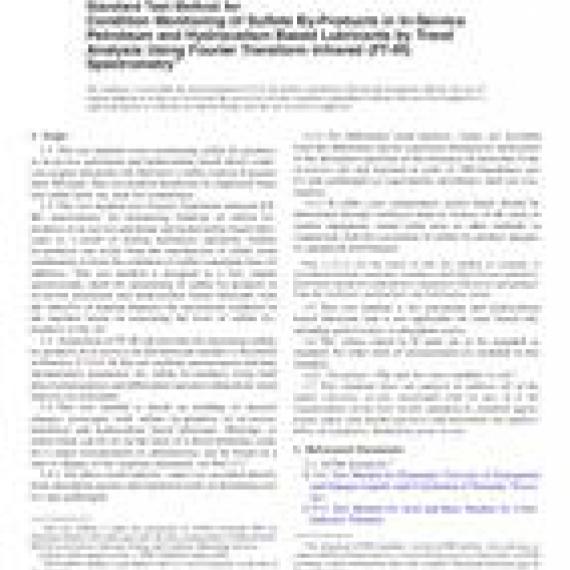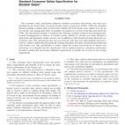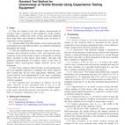No products
ASTM D7415-09
ASTM D7415-09 Standard Test Method for Condition Monitoring of Sulfate By-Products in In-Service Petroleum and Hydrocarbon Based Lubricants by Trend Analysis Using Fourier Transform Infrared (FT-IR) Spectrometry
standard by ASTM International, 07/01/2009
Full Description
1.1 This test method covers monitoring sulfate by-products in in-service petroleum and hydrocarbon based diesel crankcase engine and motor oils that have a sulfur content of greater than 500 ppm. This test method should not be employed when low-sulfur fuels are used for combustion.
1.2 This test method uses Fourier Transform Infrared (FT-IR) spectrometry for monitoring build-up of sulfate by-products in in-service petroleum and hydrocarbon based lubricants as a result of normal machinery operation. Sulfate by-products can result from the introduction of sulfur from combustion or from the oxidation of sulfur-containing base oil additives. This test method is designed as a fast, simple spectroscopic check for monitoring of sulfate by-products in in-service petroleum and hydrocarbon based lubricants with the objective of helping diagnose the operational condition of the machine based on measuring the level of sulfate by-products in the oil.
1.3 Acquisition of FT-IR spectral data for measuring sulfate by-products in in-service oil and lubricant samples is described in Practice D 7418. In this test method, measurement and data interpretation parameters for sulfate by-products using both direct trend analysis and differential (spectral subtraction) trend analysis are presented.
1.4 This test method is based on trending of spectral changes associated with sulfate by-products of in-service petroleum and hydrocarbon based lubricants. Warnings or alarm limits can be set on the basis of a fixed minimum value for a single measurement or, alternatively, can be based on a rate of change of the response measured, see Ref (1).
1.4.1 For direct trend analysis, values are recorded directly from absorption spectra and reported in units of absorbance per 0.1 mm pathlength.
1.4.2 For differential trend analysis, values are recorded from the differential spectra (spectrum obtained by subtraction of the absorption spectrum of the reference oil from that of the in-service oil) and reported in units of 100*absorbance per 0.1 mm pathlength (or equivalently absorbance units per centimetre).
1.4.3 In either case, maintenance action limits should be determined through statistical analysis, history of the same or similar equipment, round robin tests or other methods in conjunction with the correlation of sulfate by-product changes to equipment performance.
Note 1 - It is not the intent of this test method to establish or recommend normal, cautionary, warning or alert limits for any machinery. Such limits should be established in conjunction with advice and guidance from the machinery manufacturer and maintenance group.
1.5 This test method is for petroleum and hydrocarbon based lubricants and is not applicable for ester based oils, including polyol esters or phosphate esters.
1.6 The values stated in SI units are to be regarded as standard. No other units of measurement are included in this standard.
1.6.1 Exception - The unit for wave numbers is cm-1.
1.7 This standard does not purport to address all of the safety concerns, if any, associated with its use. It is the responsibility of the user of this standard to establish appropriate safety and health practices and determine the applicability of regulatory limitations prior to use.


































